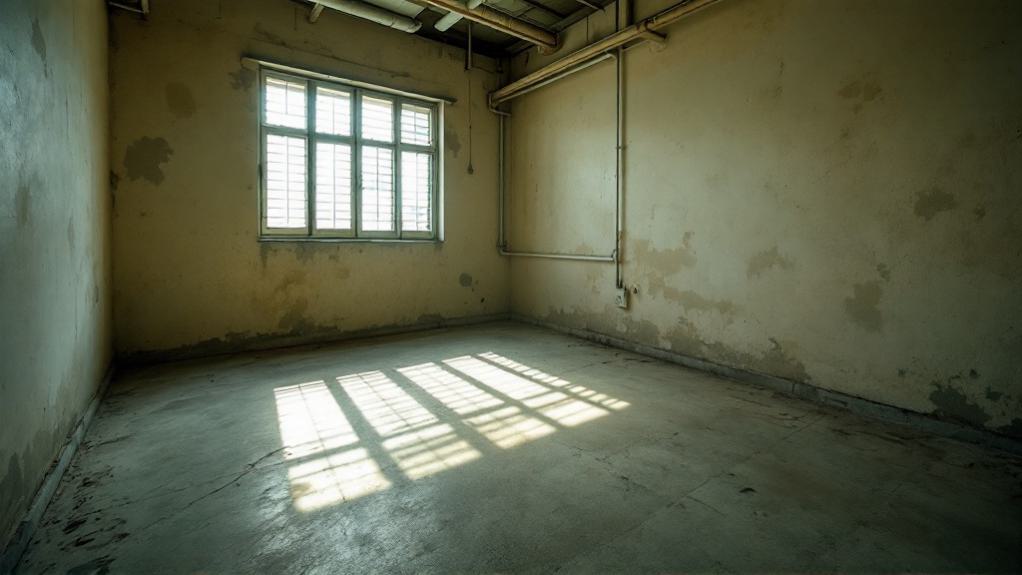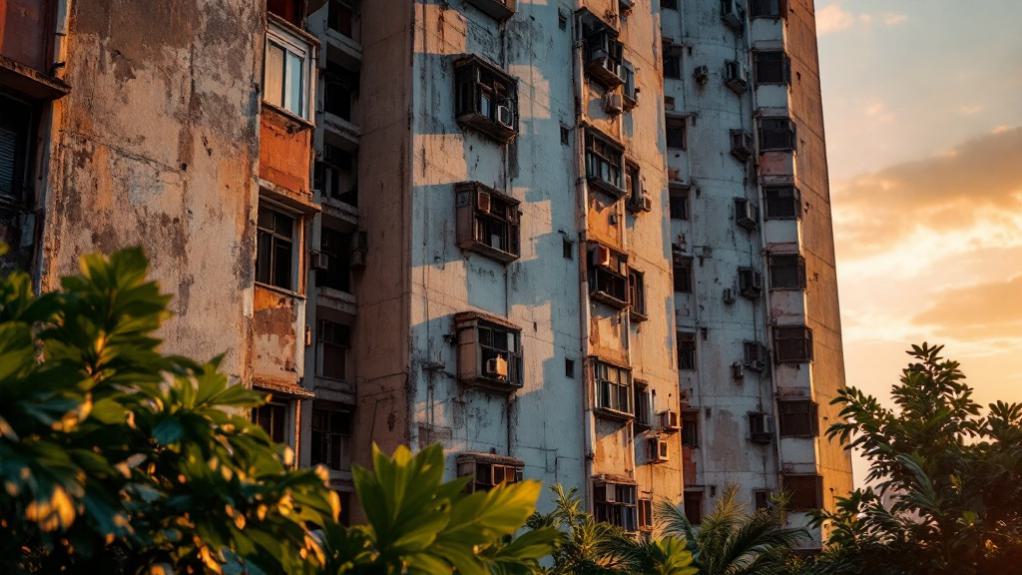Singapore’s CPF and loan restrictions for older properties, implemented in May 2019, establish a framework linking financing access to property lease duration. The cornerstone policy requires the remaining lease to cover the youngest buyer until at least age 95 for full CPF and HDB loan utilization; otherwise, pro-rated reductions apply. Properties must maintain a minimum 20-year lease for any CPF usage, while loan-to-value ratios adjust proportionally with lease coverage adequacy. Further details reveal how these restrictions balance retirement security with housing market flexibility.

With the implementation of revised policies in May 2019, the Central Provident Fund (CPF) usage rules and Housing Development Board (HDB) loan restrictions have undergone significant modifications that directly impact property acquisition and financing in Singapore’s real estate market. These changes primarily address concerns regarding property lease decay and retirement adequacy, establishing parameters that correlate remaining lease periods with buyer age profiles and financing options.
Singapore’s 2019 CPF and HDB policy revisions establish critical lease-age correlations, fundamentally reshaping property financing accessibility for diverse buyer demographics.
The revised framework stipulates that the remaining lease of a property must cover the youngest buyer until age 95 for full CPF utilization, with pro-rated usage permitted when this criterion is not fulfilled. Additionally, a minimum remaining lease of 20 years is mandatory for any CPF usage, providing clearer guidelines for prospective buyers evaluating older properties. These adjustments aim to safeguard housing adequacy throughout one’s lifetime while maintaining flexibility in property selection.
Corresponding HDB loan restrictions have been calibrated to align with the CPF usage framework, whereby the Loan-to-Value (LTV) ratio is prorated based on lease coverage until age 95. The maximum loan tenure remains capped at 25 years or until the borrower reaches age 65, with loan amounts subject to reduction when the sum of the applicant’s age and loan tenure exceeds 65 years. These financing constraints directly influence purchase decisions, particularly for younger buyers contemplating older leasehold properties.
The regulatory changes have generated notable market effects, including increased liquidity in the resale market for aging properties and potentially stabilized valuations for developments constructed in the 1970s and 1980s. Properties with less than 60 years of remaining lease may experience valuation challenges, as financial institutions incorporate lease decay considerations in their property assessments.
The demographic impact is particularly pronounced, with older buyers gaining enhanced flexibility in purchasing aged properties, while younger buyers face more stringent limitations due to the age-lease correlation requirements. These factors collectively reshape Singapore’s property market dynamics, balancing immediate housing needs against long-term retirement security within the context of the nation’s leasehold property system.
Frequently Asked Questions
Can I Appeal Against CPF Usage Restrictions for Older Properties?
Appeals against CPF usage restrictions for older properties can be submitted to the CPF Board with supporting documentation.
The Board evaluates appeals on a case-by-case basis, considering factors such as the buyer’s age, property’s remaining lease, retirement adequacy, and financial circumstances.
The decision process typically requires 2-4 weeks, with potential outcomes ranging from full approval to rejection, depending on the merits of the individual case.
How Do These Restrictions Affect Property Resale Value?
CPF usage restrictions markedly impact property resale values, particularly for aging assets with diminishing leasehold tenures.
Properties with less than 60 years remaining typically experience pronounced value depreciation, reduced buyer pools, and diminished transaction volumes.
The post-2019 policy adjustments, allowing full CPF utilization when leases cover buyers until age 95, have stabilized older property values and expanded market liquidity, creating more gradual depreciation curves rather than the sharp valuation cliffs previously observed in the secondary market.
Are There Exemptions for Conservation or Heritage Properties?
Conservation and heritage properties may qualify for exemptions to standard CPF and loan restrictions.
Properties designated under URA’s Conservation Programme or NHB’s National Monument status undergo case-by-case assessment by the CPF Board, with historical significance potentially influencing decisions.
Financial institutions occasionally offer specialized heritage property loans with modified LTV ratios, while government-backed financing options may be accessible for qualifying properties to offset the additional restoration and maintenance costs required.
What Happens if Property Value Depreciates After Purchase?
Property value depreciation post-purchase can create negative equity situations, where the outstanding loan exceeds the property’s current market value. Owners may face challenges when refinancing, as financial institutions typically reduce loan-to-value ratios for depreciated assets.
Additionally, sellers must refund CPF principal amounts plus accrued interest upon disposal; should the sale proceeds be insufficient to cover these obligations, the shortfall remains in the owner’s CPF account as a negative balance.
Do Foreign Property Buyers Face Similar Restrictions?
Foreign property buyers face substantial restrictions in Singapore’s real estate market, including a 60% Additional Buyer’s Stamp Duty (ABSD), prohibition from purchasing HDB properties, inability to utilize CPF funds, and stricter Loan-to-Value (LTV) ratios capped at 75% for first housing loans.
Additionally, these non-resident purchasers must obtain approval from the Singapore Land Authority for landed properties, though Sentosa Cove properties operate under less stringent approval requirements.





